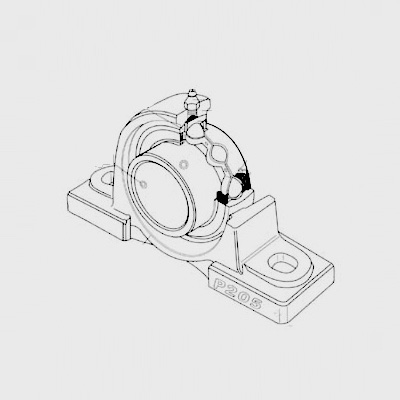
Nov . 16, 2024 07:39 Back to list
6310 bearing specification
Understanding the 6310 Bearing Specification
Bearings are essential components in various mechanical systems, helping to reduce friction between moving parts and enabling smooth operation. Among the numerous types of bearings available, the 6310 deep groove ball bearing is one of the most widely used. Understanding its specifications, applications, and characteristics is crucial for those involved in engineering, manufacturing, and maintenance.
Overview of 6310 Bearing
The 6310 bearing is a type of deep groove ball bearing, characterized by its simple design, versatility, and ability to accommodate both radial and axial loads. The '63' in its designation indicates that it belongs to the family of deep groove ball bearings, while '10' denotes its size series. The 6310 bearing typically has an inner diameter of 50 mm, an outer diameter of 110 mm, and a width of 27 mm.
These dimensions make the 6310 bearing suitable for a wide range of applications across various industries, including automotive, aerospace, manufacturing, and home appliances. Its design allows it to operate effectively under different environmental conditions and loads, making it a reliable choice in many scenarios.
Material and Design
The casing of a 6310 bearing is usually made from high-quality steel, which offers excellent strength and durability. This material choice ensures that the bearing can withstand heavy loads and resist wear over time. Additionally, many 6310 bearings come with different sealing options, such as rubber seals (2RS), metal shields (ZZ), or open designs, allowing for flexibility based on the specific operating environment. For instance, sealed bearings provide better protection against contaminants, while open bearings allow for better cooling and lubrication.
Load Capacities and Performance
One of the primary specifications of a bearing is its load capacity, which defines how much load it can support without failing. The 6310 bearing is designed to endure substantial radial loads and can accommodate moderate axial loads, making it ideal for applications such as electric motors, pumps, and fans. The dynamic load rating of a standard 6310 bearing is generally around 24,400 N, while the static load rating is approximately 13,300 N.
6310 bearing specification

Moreover, the operating speed of a 6310 bearing can reach up to 12,000 RPM, depending on the lubrication and operating conditions
. It's essential to select the appropriate lubricant, whether grease or oil, to ensure optimal performance and longevity of the bearing.Applications
The versatility of the 6310 bearing allows it to be utilized across a broad spectrum of applications. In the automotive industry, it is commonly found in wheel hubs, gearboxes, and electric motors. In industrial environments, the 6310 bearing plays a crucial role in conveyor systems, pumps, and various machinery. Its ability to handle moderate speeds and loads makes it ideal for use in fans and blowers, as well as in household appliances like washing machines and refrigerators.
Maintenance and Lifespan
Proper maintenance is essential to maximize the lifespan and performance of the 6310 bearing. Regular inspections should be conducted to check for signs of wear, misalignment, and contamination. If the bearing is sealed, it's usually maintenance-free; however, open and shielded bearings may require periodic lubrication. The interval and method of lubrication will depend on the operational conditions and the manufacturer's recommendations.
When used correctly, a 6310 bearing can operate efficiently for several years. However, factors such as overload conditions, inadequate lubrication, and contamination can accelerate wear and lead to premature failure.
Conclusion
The 6310 bearing is a vital component in many mechanical systems, offering reliability and efficiency across various applications. Understanding its specifications, including dimensions, load capacities, materials, and maintenance requirements, is crucial for engineers and technicians in different fields. By selecting the right type of 6310 bearing for a specific application and ensuring proper maintenance, users can enhance the performance and longevity of their machinery, ultimately leading to improved productivity and reduced downtime.
With its exceptional durability and versatility, the 6310 bearing continues to play a significant role in modern engineering and manufacturing processes.
Latest news
-
Premium Deep Groove Ball Bearings | High Speed & Reliability
NewsAug.29,2025
-
Durable Scaffolding Clamps - Secure & Reliable Tube Connectors
NewsAug.28,2025
-
Common Failures in Thrust Ball Bearings and Solutions
NewsAug.22,2025
-
How Tapered Roller Bearings Can Take Shock Loads
NewsAug.22,2025
-
Angular Bearings in High-Precision Spindles
NewsAug.22,2025
-
The Impact of Misalignment on Cylindrical Roller Bearing Performance
NewsAug.22,2025
